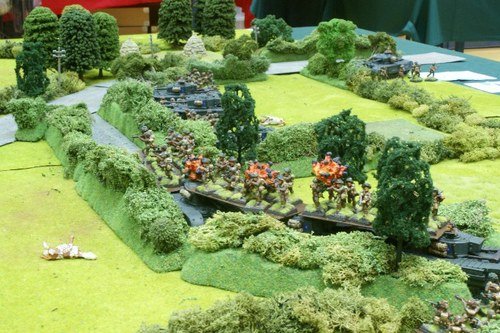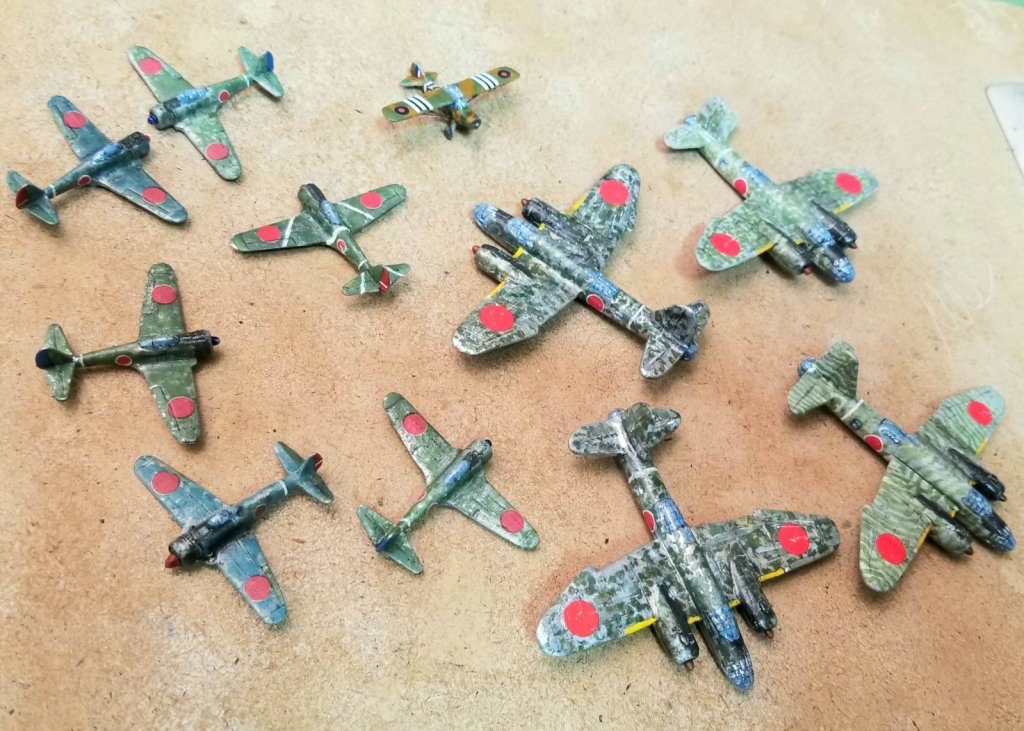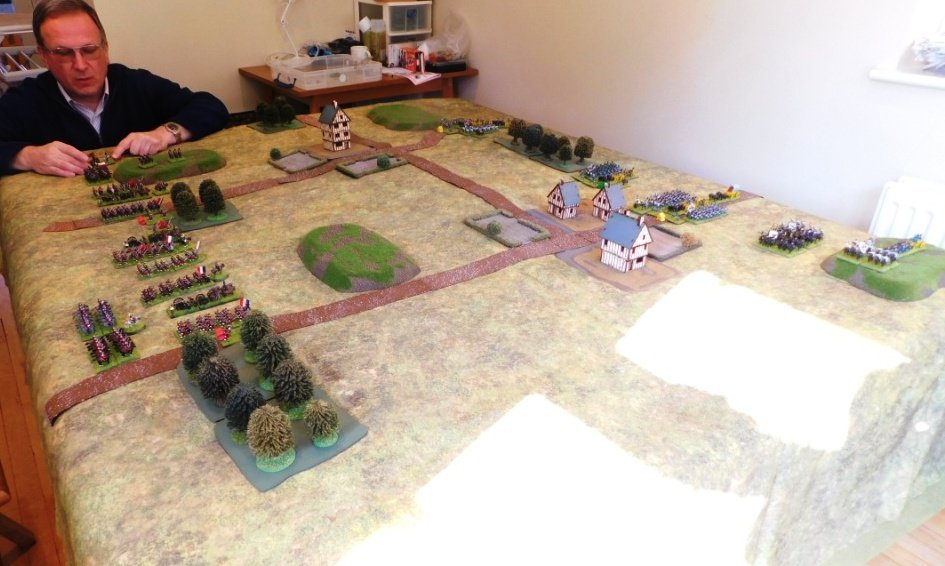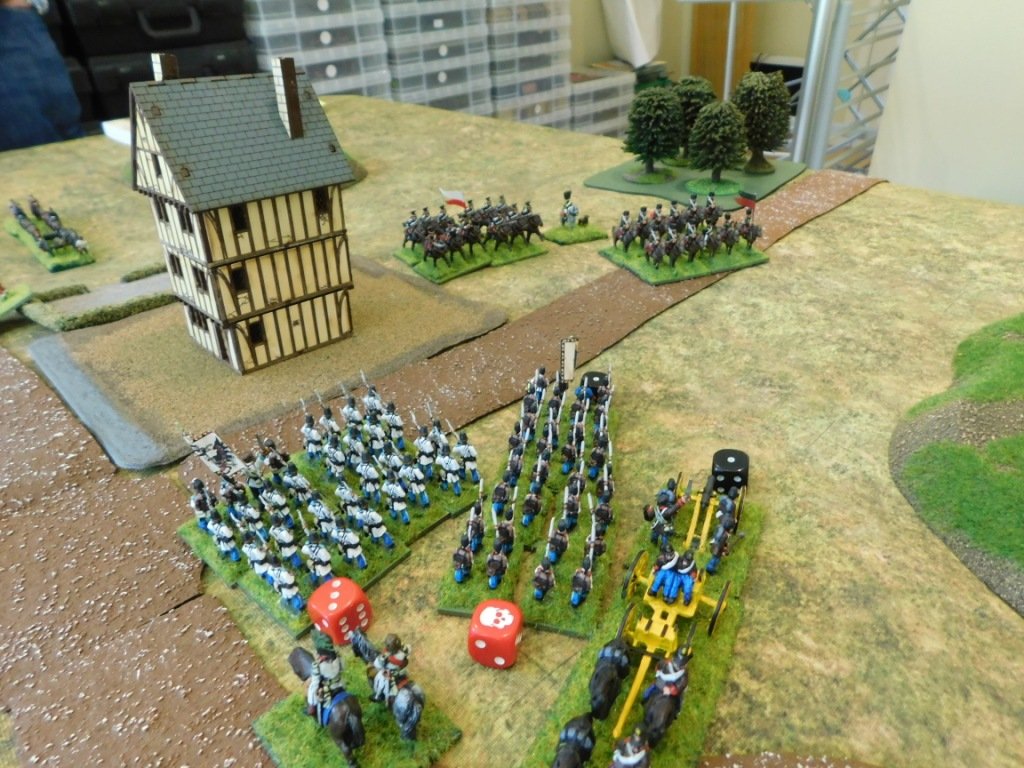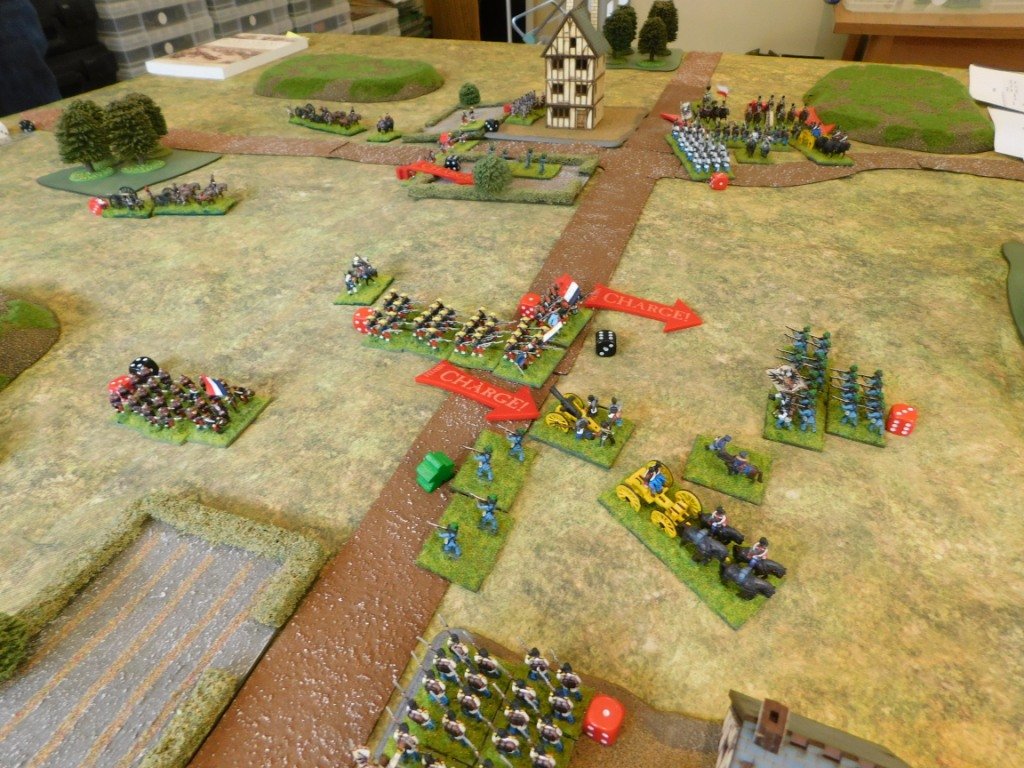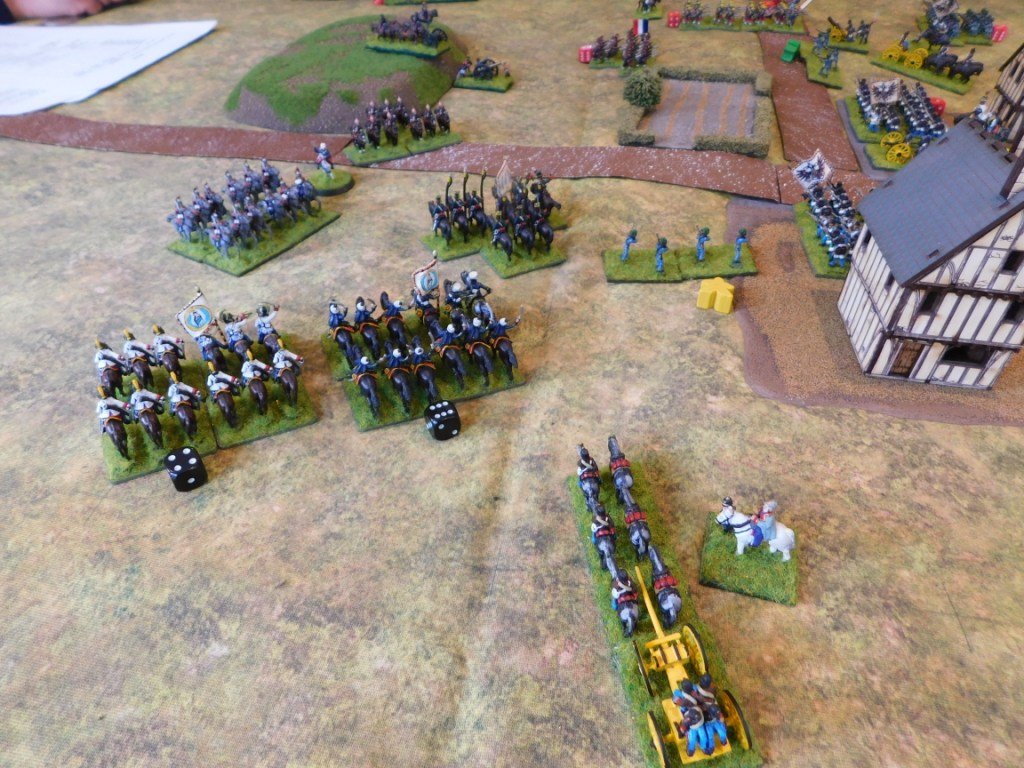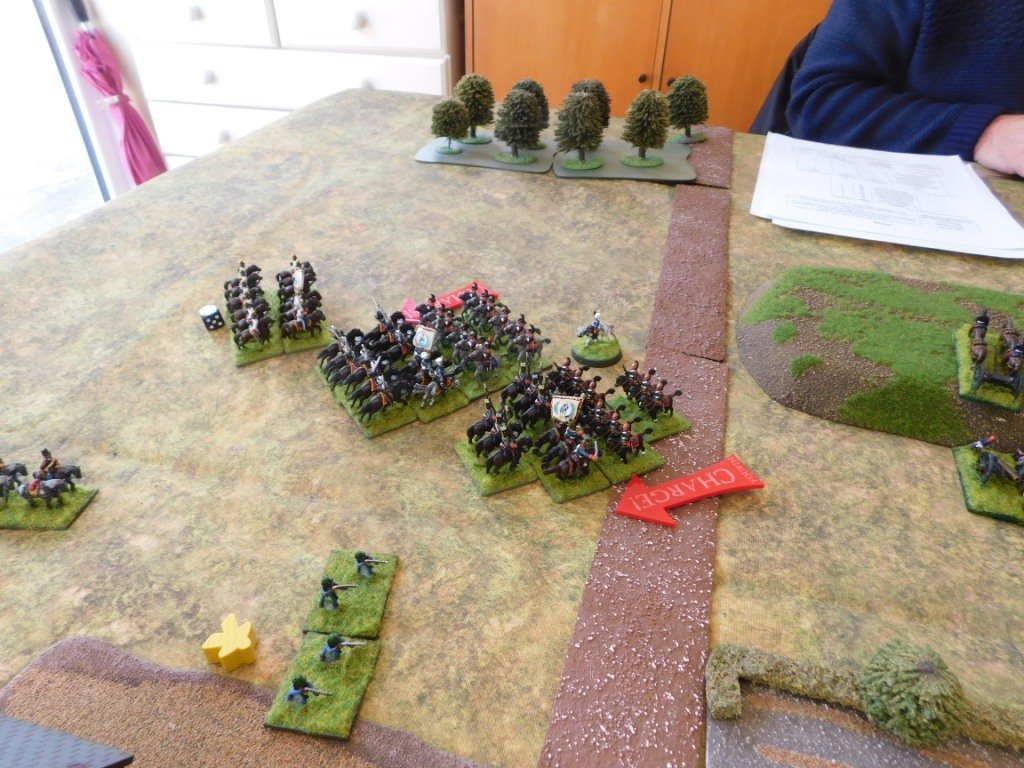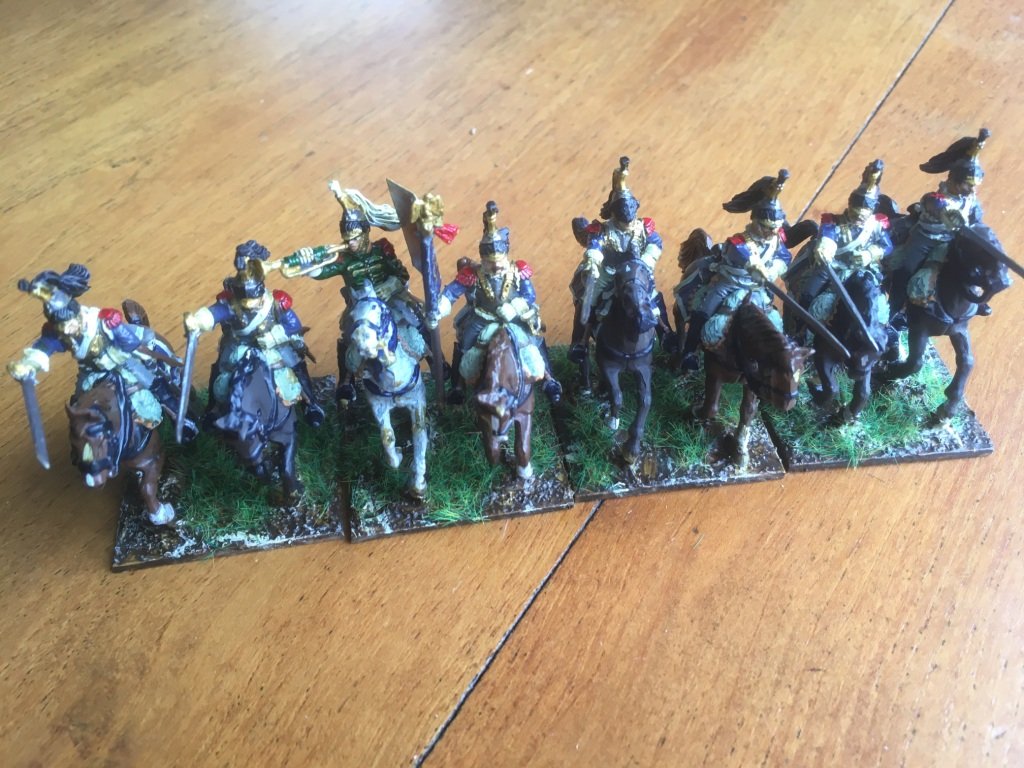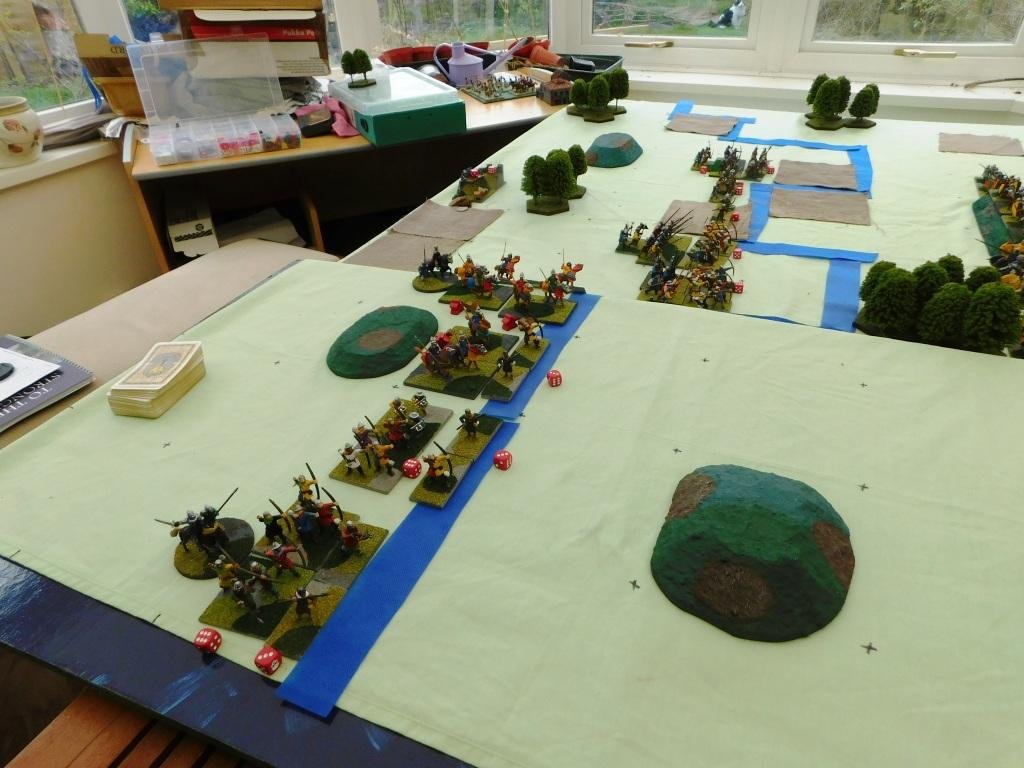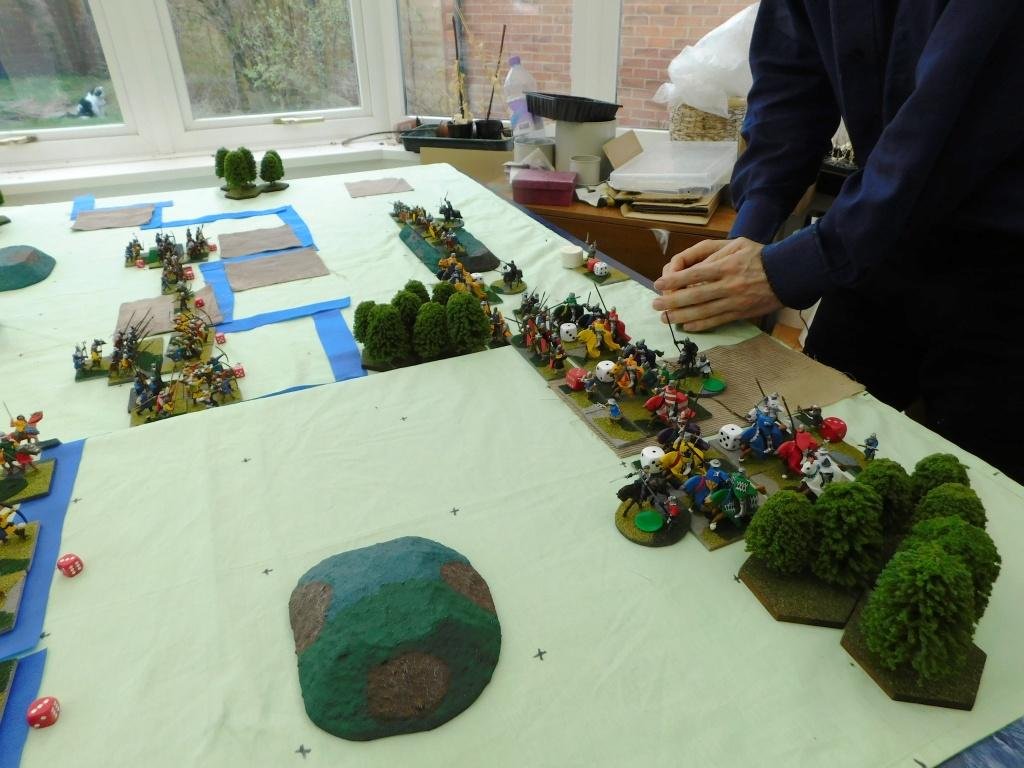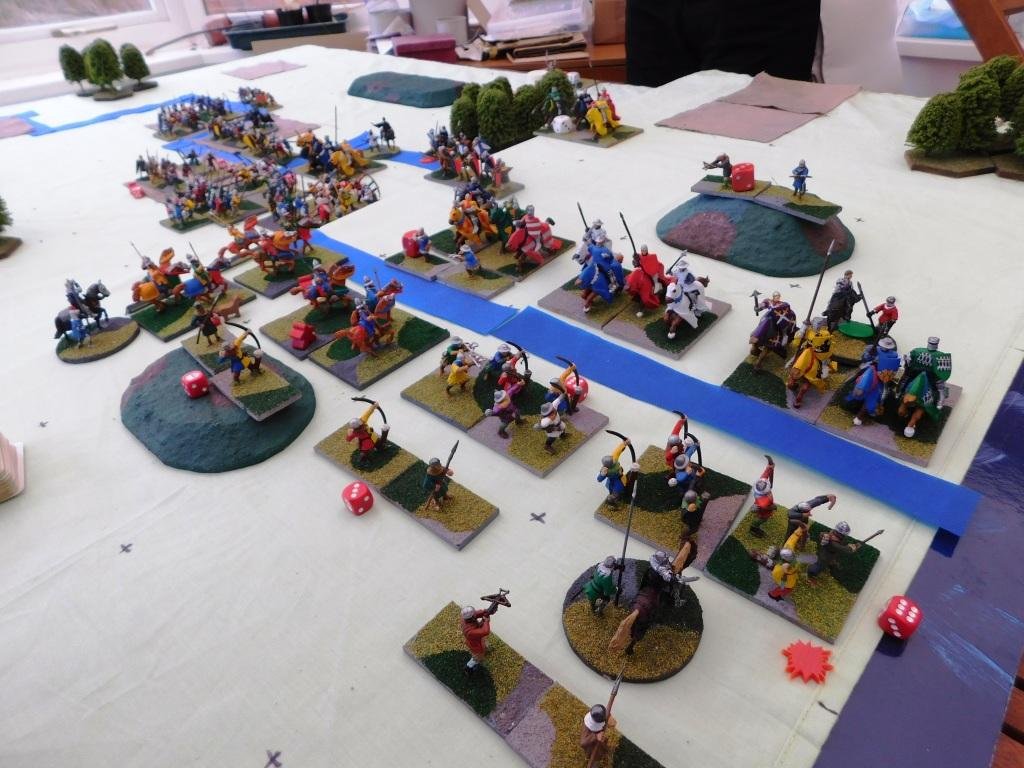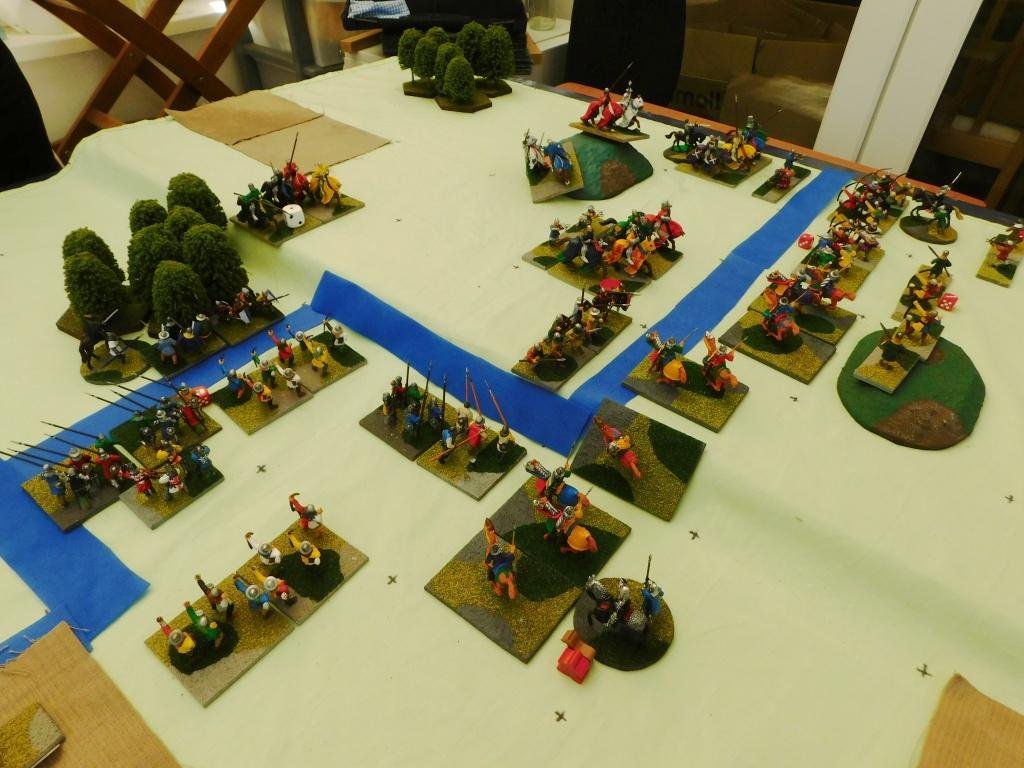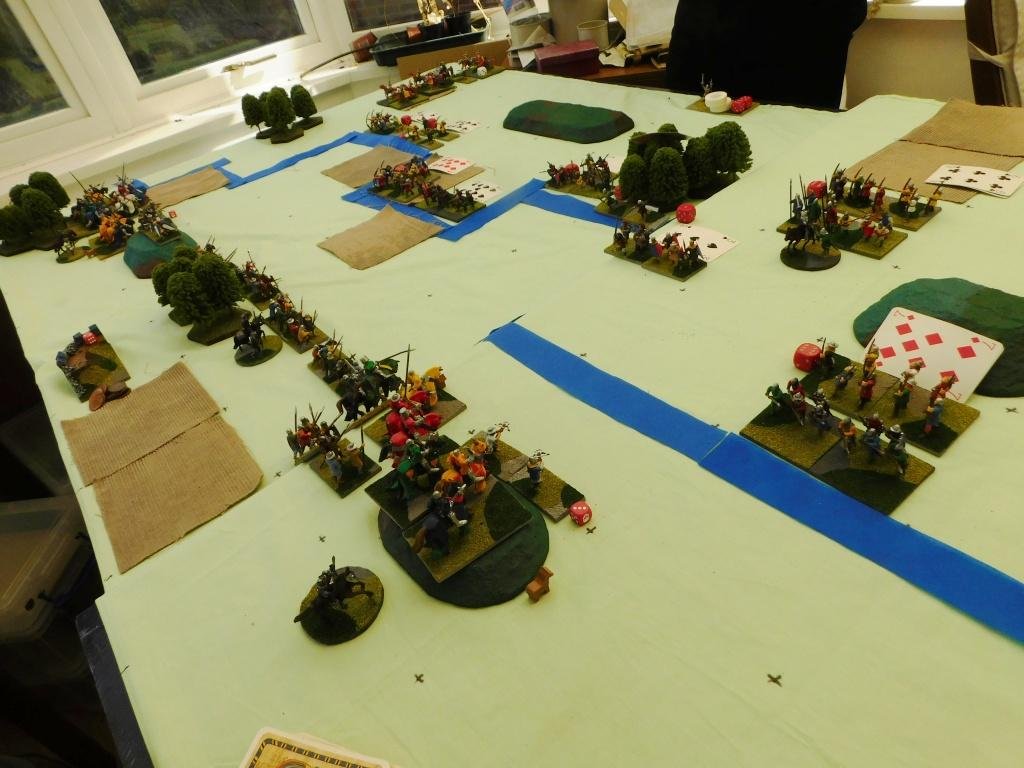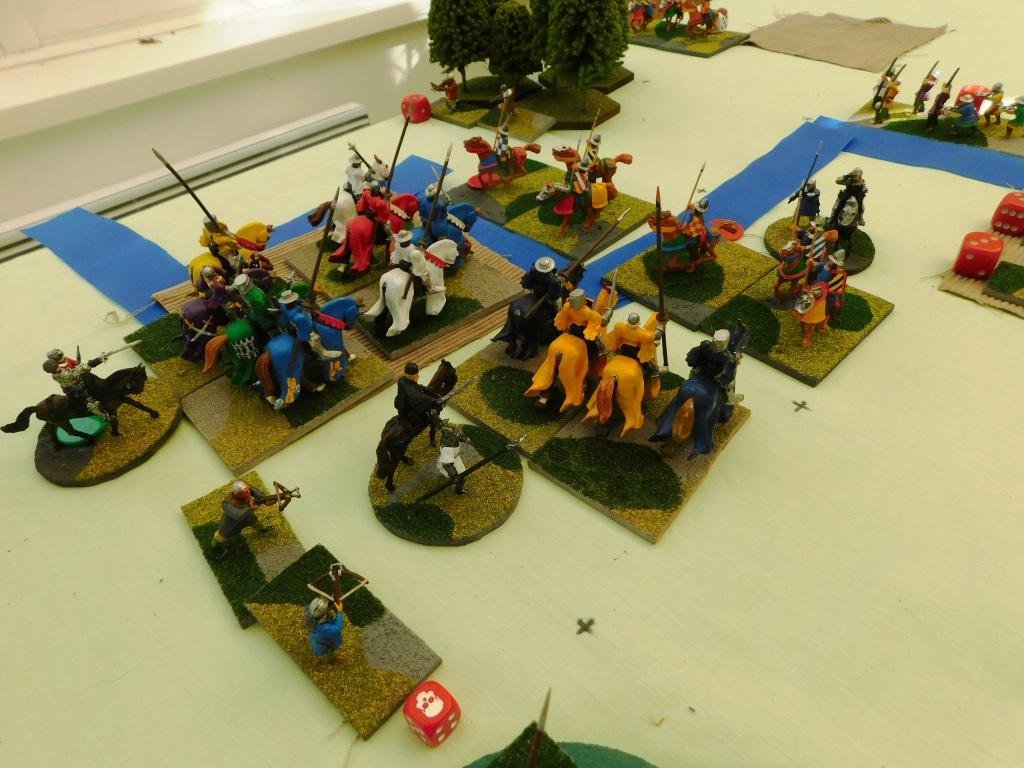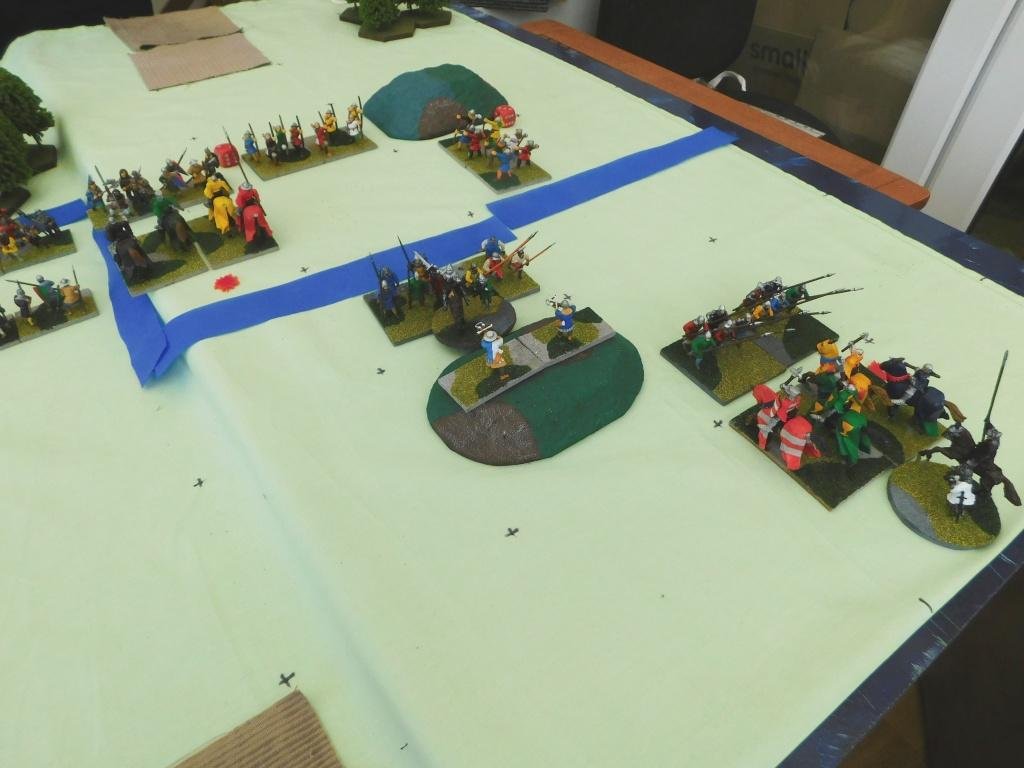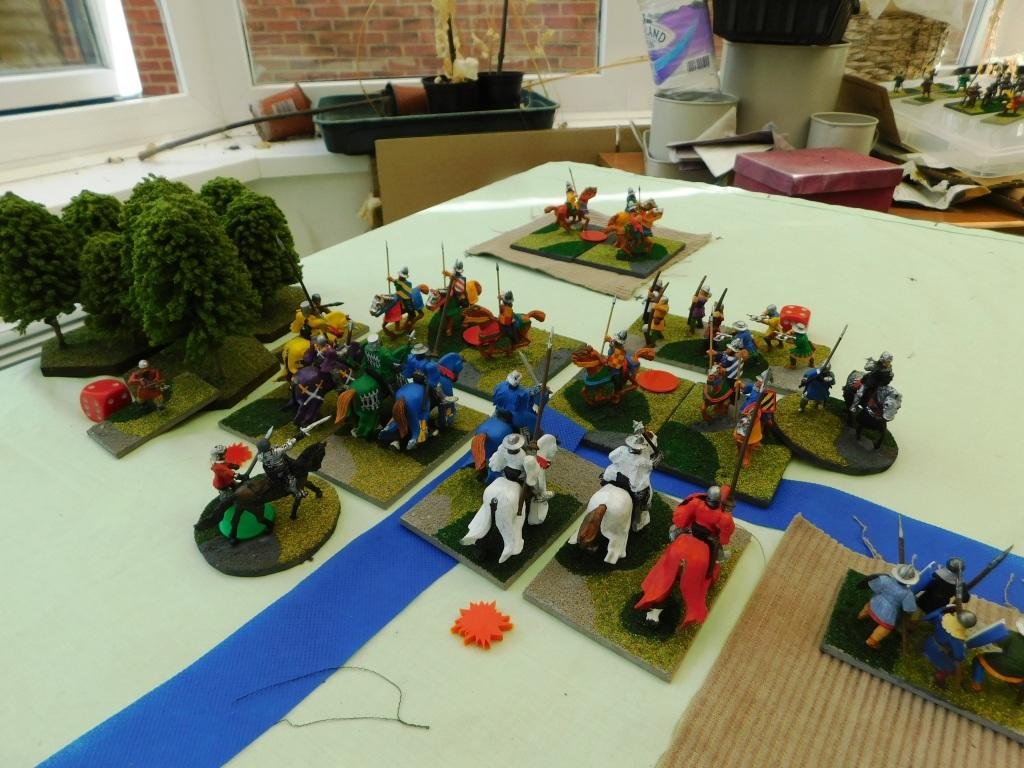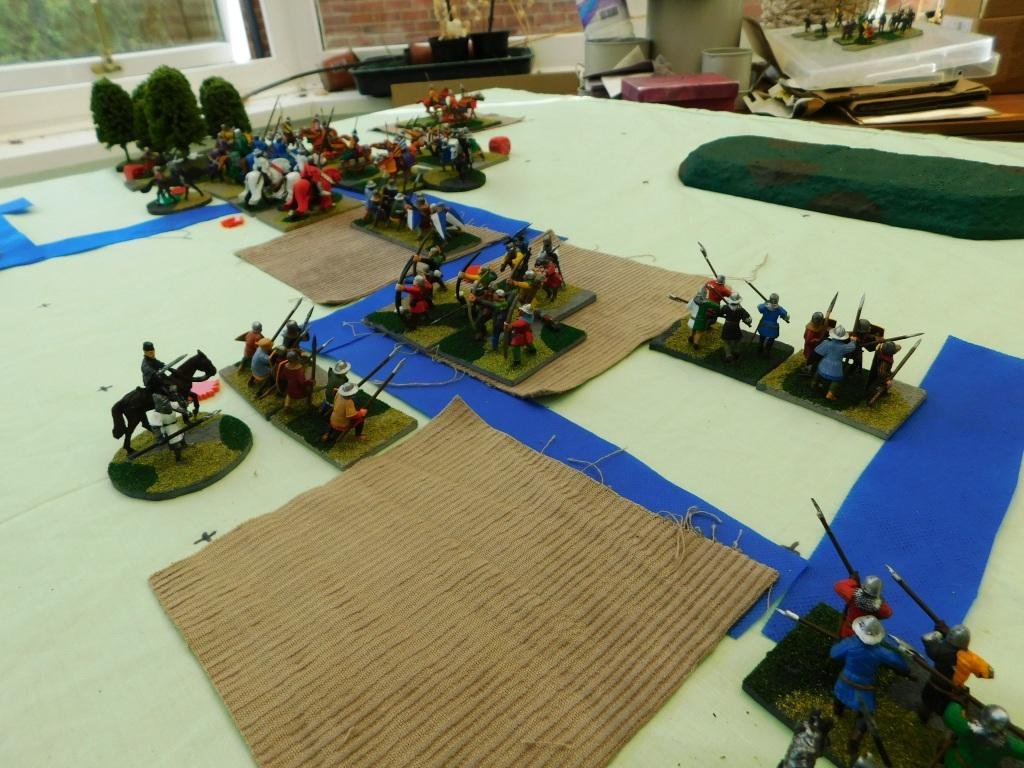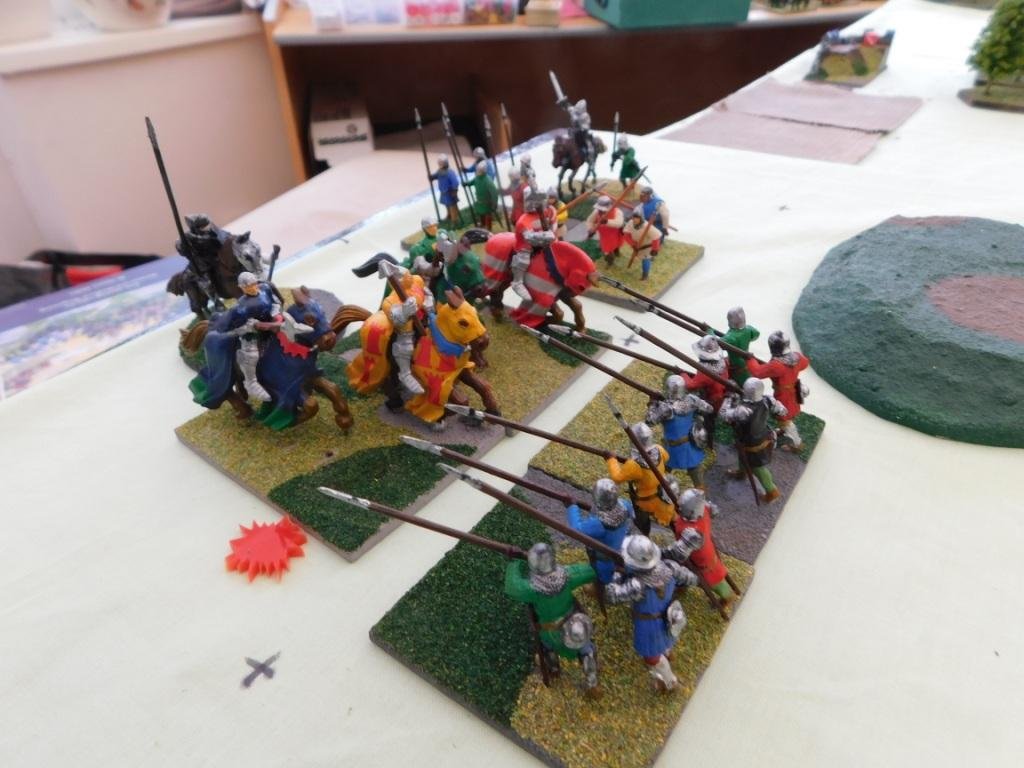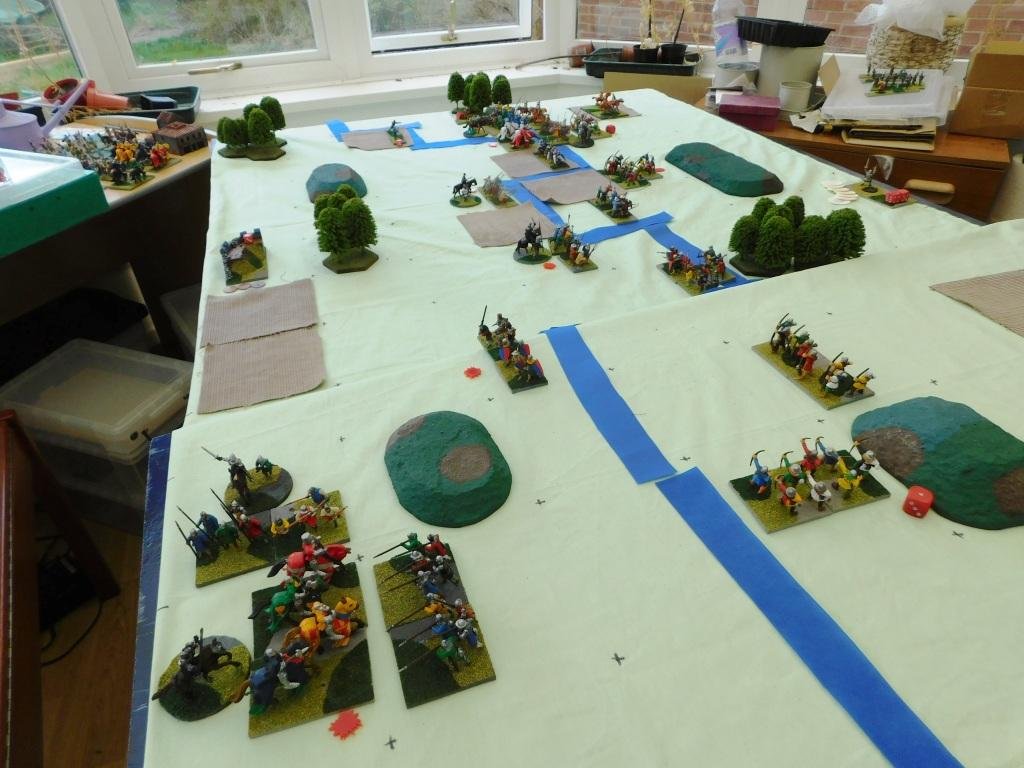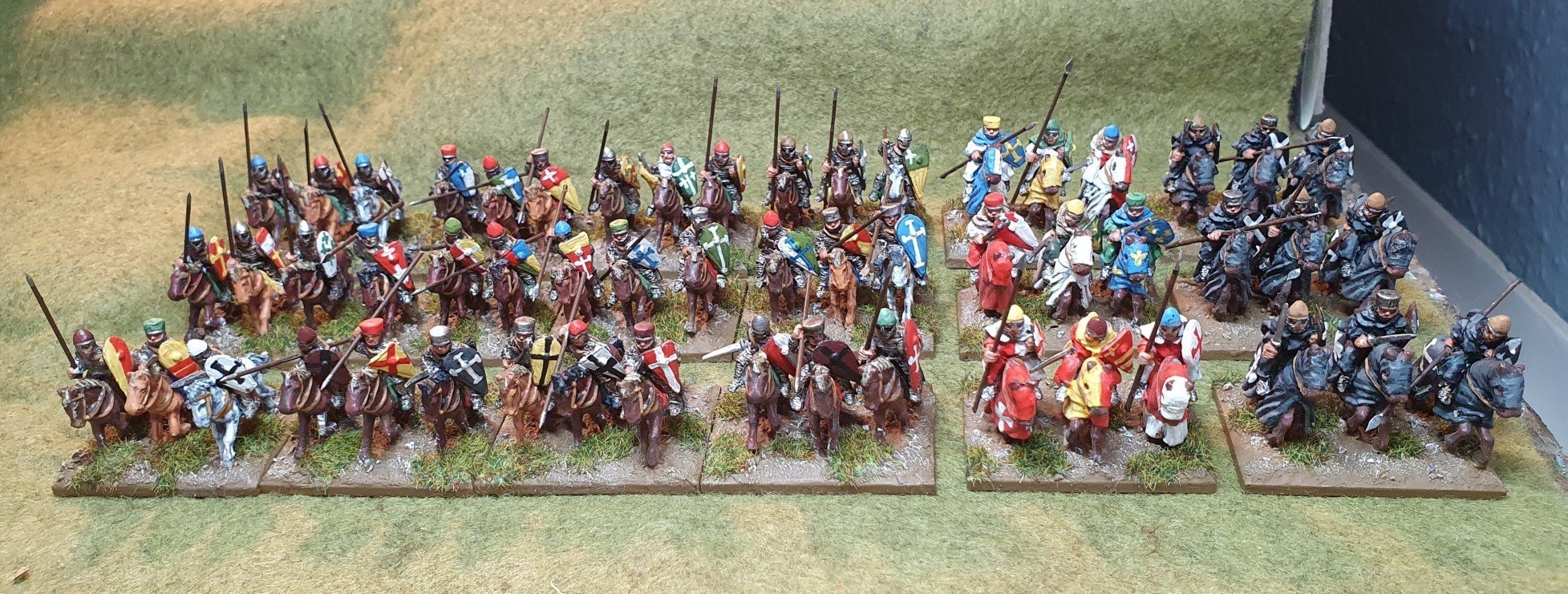More Battles on the Border
/Even though the border was a different one!
It was off to friend Bevan’s house for some more To The Strongest. Our last games had involved Feudal English and Feudal Welsh battling it out on the border: this sessions would involve the Feudal English again, but this time facing the Feudal Scots.
This promised to be an interesting match up. The English had large amounts of Knights supported by equally large amounts of longbowmen, with a load of rabble Raw Spearmen following on behind. The Scots, on the other hand, had only one unit of cavalry (light chaps armed with lances), very few missile-men, but a lot of deep spearmen and warriors.
Game One
For the first game, I would command the Feudal Scots. My plan was to wait for his troops to come to me, largely ignore the longbowmen, tie his Knights up with some spearmen, and use my warrior-types to hack into his raw troops. The loss of all the English raw troops should give me the battle before the rest of my men gave way to his Knights.
The English began the game with Knights advancing on either flank. I responded by bravely doing nothing. I had a bit of luck in that one English command refused to go forward, meaning that the Sassenachs would approach my line piecemeal as opposed to together.
Not advancing on the left meant that the wood there effectively protected my flank. This was good news, as the more the Knights advance was delayed the better. Bevan, realising what was happening, sent one lot of Knights into the woods, delaying their arrival even more.
I still got hammered by the other unit of Knights, but my men dug deep and held on. I had, however, lost a couple of units more than I had killed myself, so things were definitely not in my favour.
Meanwhile things were coming to a climax on the other flank.
I had distracted the other of his Knights units with my light horse, who had kept evading away until they left the table. The Knights then turned round and headed back to the action, whereupon my Lights re-entered the table and charged their rear.
The Knights survived this, but not a flank attack from a unit of Spearmen: with the Knights losing both themselves and the General who was with them. Not only this but the other, already disordered, unit of Knights, seeing their comrades destroyed, also fled the field.
This, combined with the casualties on the other wing and the units my Warriors had destroyed, meant that Bevan was, much to both our surprises, out of Victory Coins. I had won!
The Roles Reversed
With neither of us sure how I had managed a victory, we decided to play again, but this time with the roles reversed i.e. I would take the English, Bevan would take the Scottish.
I had a very clear plan in my head: put all four of my Knights units on the right flank and send them forward as fast as possible. Refuse everything else, and let the Knights lap around the end of his line, turn, and roll the Scots up. Simples!
So that’s what I attempted to do.
The initial advance went well. It would have been better if I had broken one of his units with one of my initial charges, but my aim had always been for most of my Knights to pin the left side of his line whilst the remainder rolled them up.
Incredibly, Bevan made a (very rare) tactical mistake, and let my Knights lap around his flank.
Look at the picture below. The Knights on the far right have turned and are about to hit the enemy’s flank. The rest of my Knights are perfectly in position. I had done it: I had the Scots exactly where I wanted them and it was now just a question of playing out the roll up.
Or not.
For those of you who don’t know what two Aces mean, it means my men won’t be moving that turn.
And on the next turn they didn’t manage to break the Scots either.
In all, it took me three turns to break that one unit when they should have fallen on turn one.
That meant that the meat of the Scottish force had enough time to hit my rabble Raw Spearmen and drive them from the field. I could only watch as my Knights stayed still or bounced off the Spearmen’s flank whilst the rest of the army crumbled.
To say that I was robbed is understatement in the extreme! Even Bevan couldn’t believe that he had survived the onslaught…but all credit to him for recognising what was happening and driving his men forward against my rabble as fast as he possible could.
Aftermath
Another two great games of TTS, and two surprise victories…one of which was a very big surprise.
In fact, all that remained was for me to give the packs of cards I had been using a final shuffle:






